I recently returned from Zambia’s Liuwa Plain National Park, and I can’t stop thinking about it. For three days, I watched Africa’s second-largest wildebeest migration unfold across endless grasslands, and I didn’t see a single other vehicle.
Not one.
Let that sink in for a moment. While the Serengeti and Masai Mara host hundreds of safari vehicles jockeying for position during migration season, Liuwa Plain offers something increasingly rare in African travel: solitude.
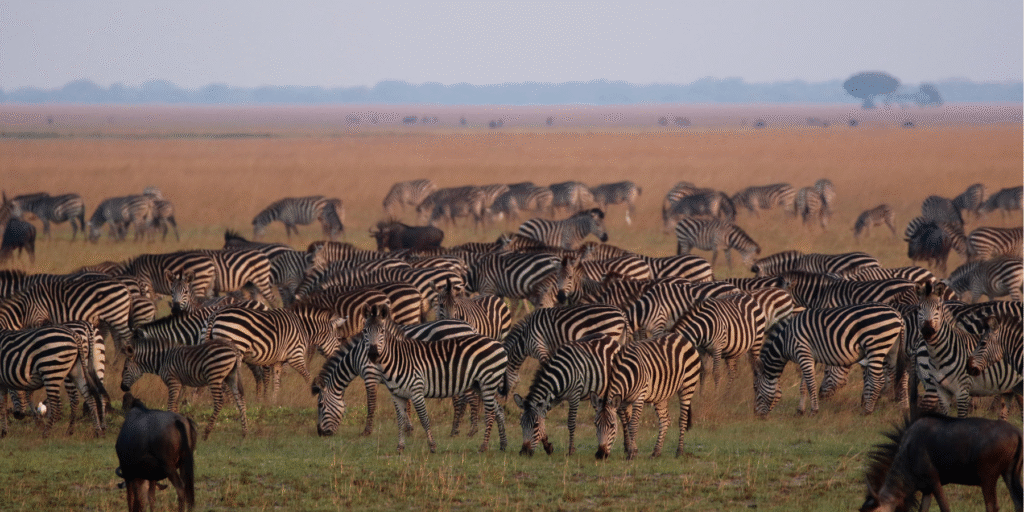
The Migration You’ve Never Heard Of
Most travelers know about the Great Migration. The circular journey of roughly 1.5 million wildebeest between Tanzania’s Serengeti and Kenya’s Masai Mara. It’s spectacular, dramatic, and deservedly famous. It also tends to be crowded during the best viewing months. This isn’t always a problem, and the experience is always worth the other people who you share the sighting with.
But in Zambia’s remote western region, more than 45,000 wildebeest make their own annual migration across Liuwa Plains National Park. It’s Africa’s second-largest wildebeest migration, and somehow, it remains virtually unknown to mainstream safari-goers.
The wildebeest arrive in November, congregating on the plains for calving season. By December, the grasslands are dotted with thousands of newborns taking their first wobbly steps. The herds remain through the wet season, creating a constantly moving spectacle across the horizon.
What It Actually Looks Like
Standing in Liuwa Plains National Park feels just like standing in the Serengeti. The landscape is characterized by tall elephant grass and expansive open plains that stretch to the horizon in every direction. The wildebeest spread out across this vastness, often appearing as dark smudges in the distance that resolve into massive herds as you approach.
During the wet season the landscape transforms entirely, the grass glows golden-green, creating a sea of movement as wind ripples across it. The water levels creep up the floodplains until the entire land becomes a system of channels and rivers that slowly retreat again when the rains stop. The wildflowers grow until the entire ground is carpeted in an explosion of color.
What was so different here in Liuwa was the silence. There was still of course, the rustle of the grass in the wind, the chirping of birds, grunting of wildebeest and the songs of insects in the evening, but it still felt silent, like I was the only person in the world.
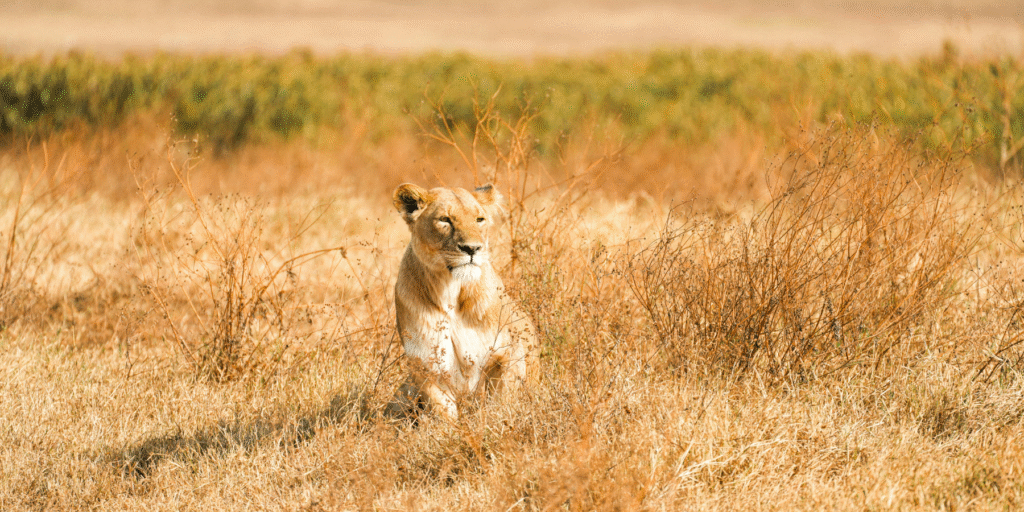
The Serengeti Experience Without the Crowds
If you’ve been to the Serengeti or Masai Mara during migration season, you know the magic can be compromised by the crowds. River crossings attract lines of vehicles. Predator sightings can mean 10-15 Land Cruisers surrounding the action.
Liuwa Plain offers the opposite experience. During my three-day visit, we had entire herds to ourselves. When we spotted lions, we were the only vehicle. When thousands of wildebeest moved across the plain at sunset, we watched alone.
The landscape itself evokes the Serengeti. Those same endless grasslands, that Africa you’ve always dreamed of, that same dramatic sky meeting earth at every horizon. But the experience feels intimate rather than industrial, personal rather than shared with hundreds of other travelers.
Why Liuwa Remains Unknown
Liuwa Plain National Park is remote. It’s in western Zambia, requiring a flight to the nearest airstrip and then a drive, or a direct charter flight to the park itself. Infrastructure here is deliberately minimal to preserve the wilderness character.
This remoteness has in a way protected Liuwa from mass tourism. While the Serengeti receives hundreds of thousands of visitors annually, Liuwa sees only a few hundred. The park management has intentionally kept it this way, prioritizing conservation and the wilderness over tourism numbers.
For travelers, this remoteness means extra logistics. But it also means exclusivity—the feeling of discovering something rare and precious.
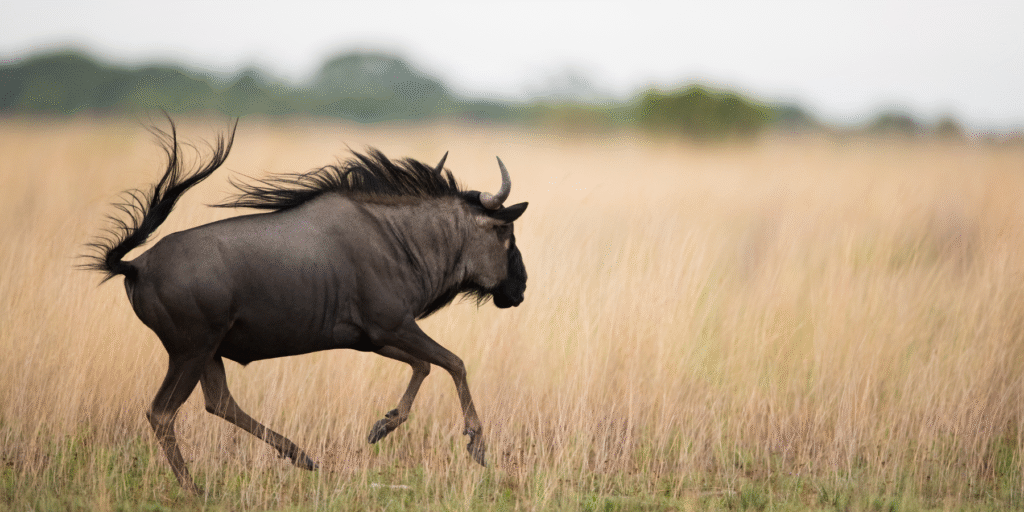
The Conservation Story
What makes Liuwa Plain particularly special is the conservation model. Unlike many African parks where communities were displaced, Liuwa is managed in partnership with the local Lozi community. The park is technically owned by the Barotse Royal Establishment and managed cooperatively with African Parks and the Zambian Department of National Parks and Wildlife.
Local community members work as rangers, guides, and in various park roles. Tourism revenue directly supports community development. This model has created genuine cooperation from local people, who now see wildlife as an asset rather than a competitor for resources.
The successful recovery of lions, the reintroduction of wild dogs, and the protection of the wildebeest migration all stem from this community-conservation partnership. When you visit Liuwa, you’re directly supporting this model.
Beyond Wildebeest: Liuwa’s Wildlife
The wildebeest migration is Liuwa’s headline act, but the park hosts remarkable wildlife diversity. Liuwa is particularly known for its:
Hyenas – Liuwa has one of Africa’s highest densities of spotted hyena, and they’re the apex predators here. Watching hyena clans interact is fascinating with their complex social dynamics that rival any documentary.
Wild Dogs – Critically endangered African wild dogs have been successfully reintroduced to Liuwa, and sightings are increasingly common.
Lions – Liuwa’s lion population was reduced to a single female named Lady Liuwa in the early 2000s. Thanks to extraordinary conservation efforts, the pride has recovered. Having seen a mother pregnant with cubs felt especially meaningful when I was there, having known their story.
Birds – With over 330 species, Liuwa is a birding paradise. The mix of grassland and seasonal wetland species creates incredible diversity.
Cheetahs – The open grasslands provide perfect cheetah habitat, and sightings are regular.
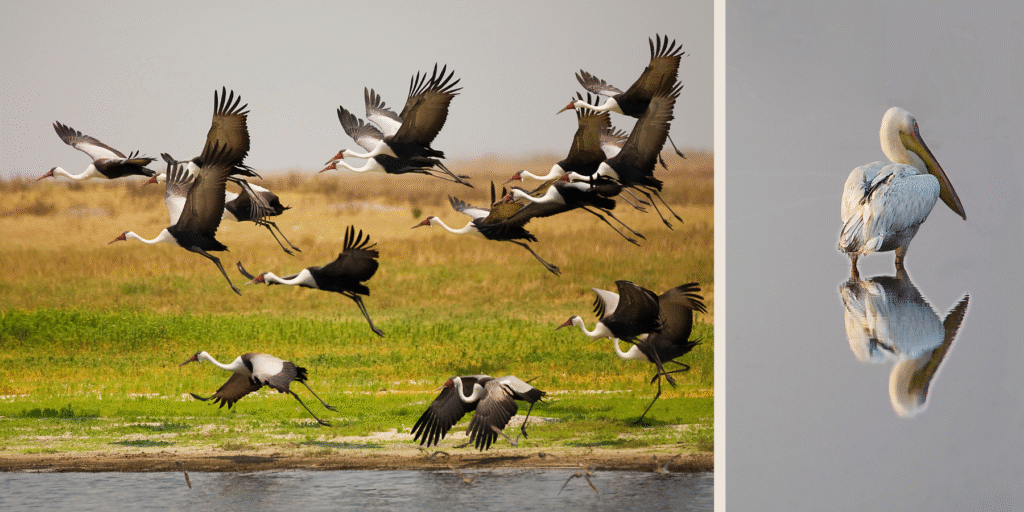
When to Visit
The wildebeest migration is the obvious draw, and timing matters:
- November-December: Peak migration season. Wildebeest arrive and begin calving. This is prime time.
- January-March: Herds remain on the plains. Wet season means lush landscapes but some areas may be waterlogged.
- April: Wildebeest begin dispersing as the dry season approaches.
- May-October: Dry season. Wildebeest have mostly dispersed, but other wildlife concentrations increase around water sources. Different experience, but equally valuable.
I visited in May, which was stunning in its own right. There weren’t any mega herds of Wildebeest next to camp, but we did have incredible sightings nonetheless. I stayed at Ker & Downey Zambia’s recently acquired camp, King Lewanika, and they offer fly camping that they can set up on the other side of the parks closer to the herds for those who really want a taste of the migration in May
Who Should Visit Liuwa
Liuwa Plain isn’t for everyone, and that’s okay. It’s perfect for:
- Experienced safari-goers who’ve done the classic circuit and want something different
- Travelers who value exclusivity over convenience
- Wildlife photographers who want unobstructed shots without other vehicles
- Conservation-minded travelers who want to support community-based models
- Adventure seekers who appreciate remoteness and authenticity
- Anyone frustrated by crowds at more famous parks
How to Include Liuwa in Your Safari
Because of Liuwa’s specialized game, Liuwa works beautifully as part of a broader Zambia or Zimbabwe itinerary where you can experience other wildlife. Here are combinations to visit Liuwa that I would recommend:
Lower Zambezi → South Luangwa → Liuwa: Make your way through the diverse landscapes in Zambia. Start with the riverfront, move on through the forests of South Luangwa, and finally finish in the vast open plains of Liuwa.
Hwange → Liuwa → Lower Zambezi: Add the Zambezi River experience (canoeing, fishing, and riverfront wildlife viewing) and Hwanges massive game concentrations to Liuwa’s plains and you have a match made in heaven!
Victoria Falls → Liuwa → South Luangwa : End (or begin) your Zambia adventure with the majesty of Victoria Falls. The combination of migration, wilderness, and one of the world’s great natural wonders creates a comprehensive Zambia experience.
Most clients spend 3-4 nights in Liuwa—enough time to fully experience the park without exhausting the game viewing opportunities. Because sightings can be spread across vast distances, having multiple game drives increases your chances of witnessing the full range of wildlife activity.
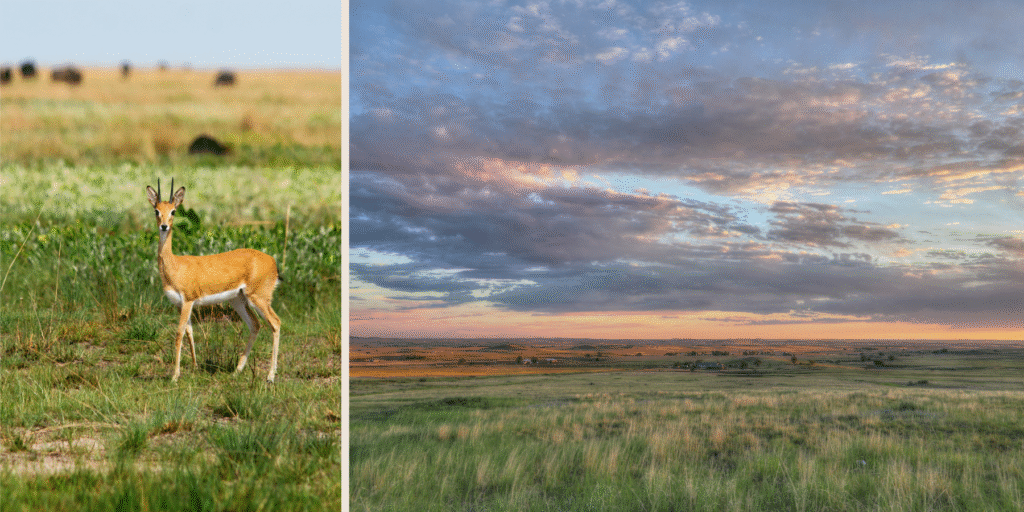
An Invitation to Discover
I realize I’m sharing what feels like a secret, and part of me wants to keep Liuwa to myself. But the conservation model here depends on sustainable tourism. The community needs visitors to continue protecting this landscape and its wildlife.
So I’m inviting you to discover Liuwa Plain. Not because it’s easy or convenient, but because it offers something increasingly rare: a genuine wilderness experience where wildlife still dictates the rhythm and humans are merely privileged observers.
If you’ve been searching for the Africa that exists beyond the brochures, beyond the crowds, beyond the well-worn safari circuit, Liuwa Plain is waiting.
Interested in experiencing Liuwa Plain’s secret migration? Contact our team to discuss custom Zambia itineraries featuring this remarkable park.
Documentaries Filmed in Liuwa
If you’re interested in checking out Liuwa buts just need a little push check out these documentaries filmed in Liuwa to get inspired for your trip!
- The Last Lioness (2009) – Chronicles the story of Lady Liuwa, the last remaining lion in the park, as she survives alone while conservation efforts work to bring the pride back from the brink of extinction.
- The Real Lion Queen (2013) – A follow-up documentary to The Last Lioness, showing the remarkable recovery of Liuwa’s lion population after the successful introduction of new pride members and Lady Liuwa’s continued legacy.
- Clash of the Hyenas (2008) – Explores the complex social structure of Liuwa’s massive hyena clans, showcasing their intelligence, cooperation, and dominance as the park’s apex predators.
- Dynasties II – Hyena (2022) – Part of the BBC’s acclaimed Dynasties series, this episode follows a hyena matriarch in Liuwa as she navigates clan politics, raises her cubs, and competes for survival on the plains.
- Dynasties II – Cheetah (2022) – Also from the BBC’s Dynasties series, this episode follows a cheetah mother in Liuwa’s grasslands as she attempts to raise her cubs alone against the odds of predators and harsh conditions.
These documentaries offer a stunning preview of Liuwa’s wildlife and landscapes—and after watching, you’ll understand why this place is so special.

